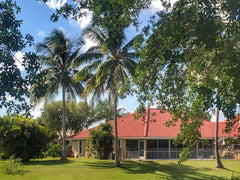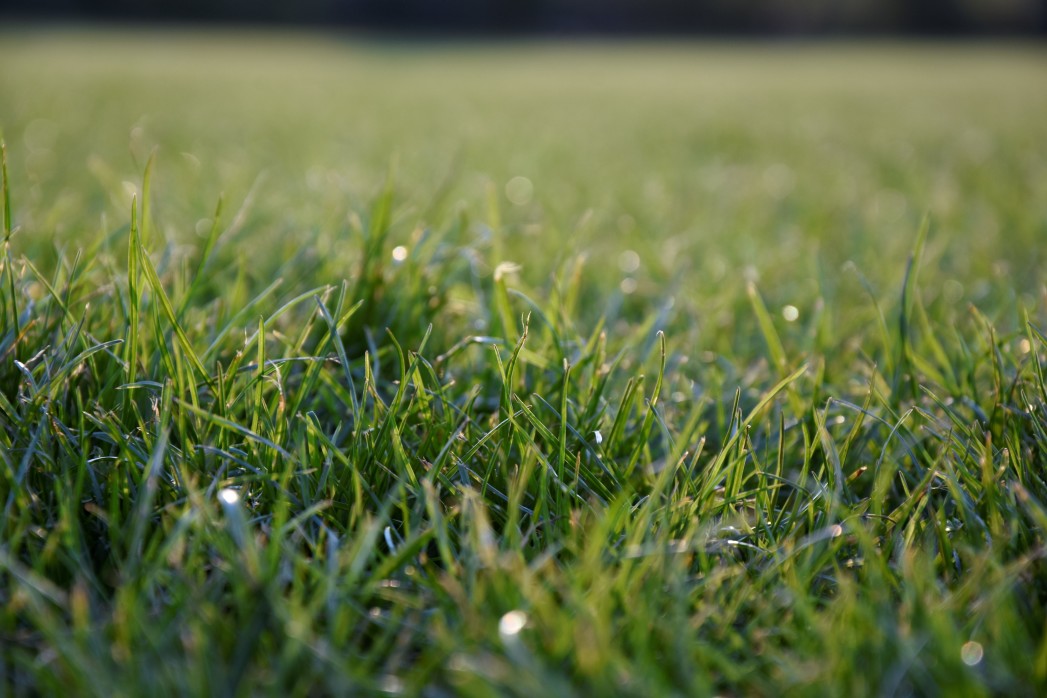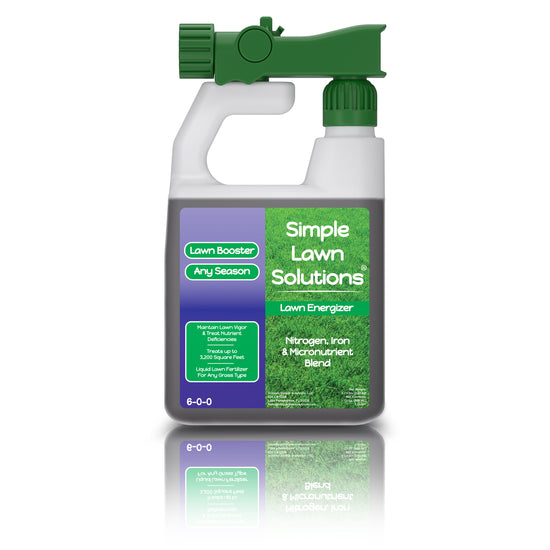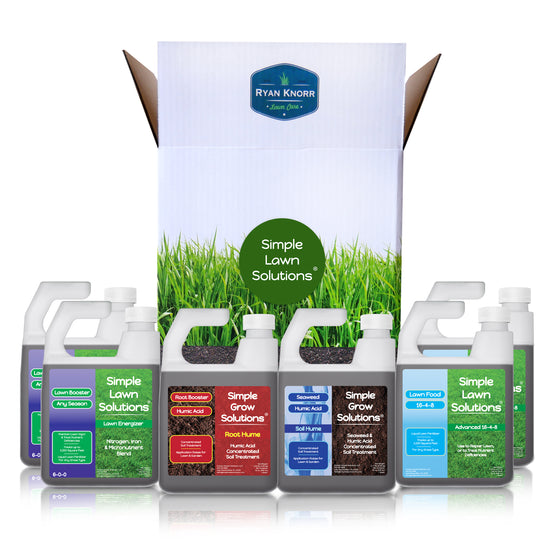You're probably aware of just how many different varieties of grass are suitable for lawn use. When it’s time to kick up your lawn care and start new growth, how do you decide which type is right for you? Well, if you live in a southern state you know you're probably best off with warm-season grass, but which one?
Warm-Season Grass Subspecies
 Warm-season grass species:
Warm-season grass species:
- Bermudagrass
- St. Augustinegrass
- Centipedegrass
- Zoysiagrass
- Bahiagrass
These types of grasses are considered southern grasses because they thrive in warm states and lack the cold-weather hardiness of cool-season grasses. If you’re not sure whether or not you live in a state where warm-season grass is appropriate, or if you live in the tricky transition grow zone, this map (under Turfgrass Types) can help decide what types of grass will do well in your area.
Benefits of Planting 'Palmetto' St. Augustinegrass

So, you’ve determined that you live far enough south to warrant a grass species that loves the heat. You need a warm-season grass species and St. Augustinegrass is what you've decided on. St. Augustine comes in several different varieties or "cultivars" (cultivated-variety), including:
- 'Palmetto' - Was developed in Daytona Beach and is the most sold patented turfgrass in the world. Great shade, cold, and drought tolerance. Finer textured than other St. Augustinegrass cultivars.
- 'Bitter Blue' - has good shade tolerance and is preferred in lawns that have mature trees
- 'Floratam' - Most common cultivar for home lawns in Florida, Floratam grass does well in full sun and has adequate shade and drought tolerance
- 'Sapphire' - Sapphire grass is a type of grass that does well in coastal areas as it can tolerate saltiness, drought, and shade

'Palmetto' is the type of grass you should choose if you live in a coastal or an island area. This type of grass likes full sun to partial shade, and it has excellent green color. 'Palmetto' grass has a fine, soft texture, which makes for lower maintenance lawn care because it is resistant to thatch build-up and chinch bugs. While 'Palmetto' definitely prefers warm weather, it is more cold-weather hardy than other types of St. Augustine. It can withstand temperatures as low as five degrees without showing too many signs of stress. Because this type of grass grows a massive root system beneath the soil, it requires less water to survive and thrive. A large root system means two things: less intensive lawn care, and more drought tolerance. Under the right conditions, and with a lawn care routine that is appropriate to this variety of St. Augustinegrass, including the use of liquid lawn care products, you will have a beautiful, lush, green lawn.
The Downside of 'Palmetto' St. Augustinegrass
If 'palmetto' sounds like a dream, you’re not wrong. But it’s essential to make sure that your location has the appropriate growing conditions. While it is more drought-tolerant and has excellent resistance to bugs and thatch, it is still a living organism that needs maintenance through proper lawn care. The use of liquid lawn care products can make your lawn care routine easy and keep your Florida Palmetto grass as happy as it can be.
Proactive Treatments Before You Seed Your Lawn With 'Palmetto'
Not unlike other types of grass, there are some lawn care steps you can take before you seed with 'palmetto' to ensure a lush lawn full of turfgrass. Liquid lawn care is the most efficient way to achieve this. Before planting grass, the first step is to perform a soil test that you can purchase at your local home improvement store. Seeds require plenty of phosphorus to facilitate root mass production, try a fertilizer like 6-18-0.
How to Seed a Lawn
Following the pre-lawn care steps mentioned above, you’re ready to seed your lawn.

- Till the ground to about three inches deep using a tiller. Add organic matter and topsoil and rake into the soil.
- Use the back of your rake to level out the surface of your lawn, and account for drainage of excess water.
- Use a lawn roller to roll out your yard.
- Follow the directions on the packaging of your grass seed to spread over your yard. Spread half of the grass seed in one direction and the other half at a right angle to ensure even coverage.
- Rake and roll out your yard again.
- Spread out some weed-free straw to prevent the grass seed from blowing away, and water your lawn.
- Keep the soil moist until the new grass reaches about an inch long then cut back to watering once per day.
- When the new growth reaches three inches, mow your lawn. When you’ve mowed the grass three times, cut back watering to once per week. Your grass needs approximately one inch of water per week, depending on the current climate.
- After four to six weeks, begin your lawn care routine, starting with fertilizing your lawn with liquid lawn care food rich in nitrogen.
Now that your 'palmetto' turf has established itself, your lawn care will now include:
- Fertilizing with liquid lawn care food at the beginning and end of the growing seasons.
- Aerate using liquid lawn care soil loosener just before the growing season.
- Watering the grass with approximately one inch of water per week
- Mowing the grass.
The Benefits of Liquid Lawn Care

When it comes to feeding your grass, there are a couple of different products you can use; granular or liquid. We recommend liquid lawn care for these reasons:
- Liquid lawn care provides faster absorption by the grass of the macronutrients it needs to thrive.
- Liquid lawn care has a lower salt content. Roots do not like salt, and granular fertilizer is higher in salt.
- Liquid lawn care is easier to apply in an even, consistent way.
Starting a new lawn can be a long, tedious process. From choosing your species and variety of grass to maintaining the green through regular lawn care, it’s a chore that if you don’t stay on top of, things can quickly get out of control. But, a beautiful lawn that is the envy of the town is your reward for all the hard work you put into maintaining that yard. We at Simple Lawn Solutions are here to help you achieve your lawn care goals!











2 comments
Hello David, we recommend first obtain a soil test. Since the area is root bound, you may want to consider adding some topsoil to these areas if you are planning on planting the grass close to the root zone. Soil Hume and Root Hume are great for helping the grass get the most nutrients from the soil. Depending on if there is a nutrient deficiency will determine what fertilizer is best. Once you lay the sod, water deeply to encourage deep root growth. Please reach out to us at hello@simplelawnsolutions.com with any other questions. Happy New Year!
Want to use Palmetto St Augustine, area is shaded also root bound. Need to prep soil what is best? Likely will plug bad areas. Planned for March.